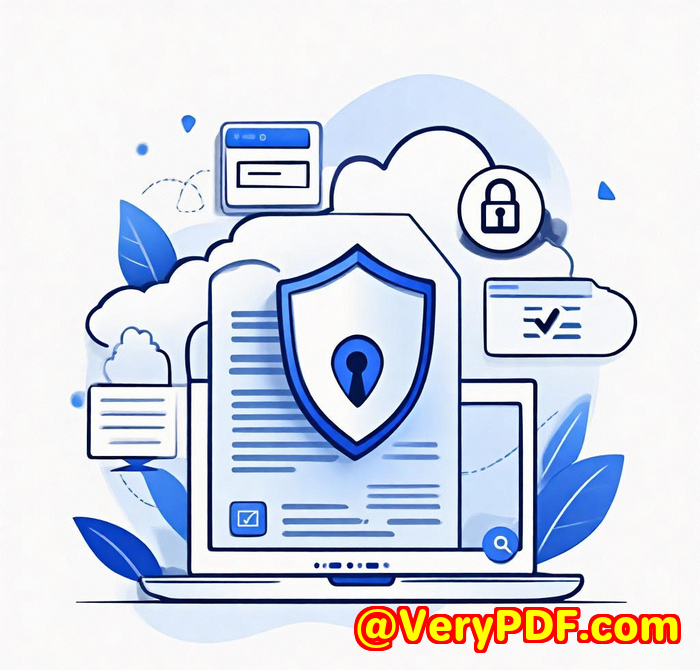A Better Alternative to Adobe PDF SDK: Open HTML5 Annotation Source Code for Developers
Meta Description
Skip bloated SDKs. Here's how I streamlined PDF markup in my app with VeryPDF HTML5 PDF Annotation Source Code.
Every time a client asked me to add document markup to our web app, I'd wince.

We'd tried everythingfrom heavyweight solutions like Adobe PDF SDK to cobbled-together browser workarounds. The SDKs were bloated, expensive, and overly complex. Open-source libraries? Constantly breaking or missing key features.
I just wanted one thing:
A simple, clean, browser-based PDF annotation tool I could drop into our system without jumping through hoops or rewriting half our codebase.
That's when I stumbled on VeryPDF HTML5 PDF Annotation Source Code License.
Why I Chose VeryPDF Over Adobe's PDF SDK
I've worked with Adobe SDKs before. They're powerful, no doubt. But they're also overkill for 90% of what developers actually needespecially when you just want users to view, highlight, comment, and share PDFs online.
VeryPDF's HTML5 PDF Annotation tool cut the fluff and gave me the essentials in one slick, embeddable solution.
And best of all? It runs natively in the browser. No plugins. No Java. No stress.
What It Does (In Plain English)
This tool lets your users:
-
View and annotate PDFs and Office docs right in the browser
-
Collaborate with comments and markups (point, area, text)
-
Export, email, or share those annotated files
-
Use it on any device or OS (Windows, Mac, Linux, iOS, Android)
It works with 50+ file types, including PDF, Word, Excel, PowerPoint, Visio, CAD, and even images like TIFF and JPG.
Features That Actually Mattered to Me
1. Truly Cross-Platform
I tested it across Chrome, Firefox, Safari, Edge, and even good ol' IE (don't ask). Worked every time.
Plus, no extra installs or dependencies. Just load the page, and boomPDF viewer and annotation tools were ready.
2. Clean Annotations API
The API let me:
-
Add comments via script
-
Burn annotations into final files
-
Keep the original untouched for auditing
-
Assign layer-based markups so multiple users could annotate the same doc
It also supports text, freehand drawing, highlight, strikeout, arrows, and even font-size and color adjustments.
Use case? I built a workflow where our reviewers could leave feedback directly on documents, and the dev team could auto-export those annotated PDFs for archival.
3. Integration Was Stupid Simple
Unlike Adobe's SDK, which feels like navigating a 500-page technical manual, this was plug-and-play.
I dropped the HTML5 Annotator into a div, fed it a PDF URL, and I was live.
Backend talking to our server via REST API? Check.
Export with all markups? Done.
Share via email or save to DB? Easy.
No server-side PDF library required unless you're loading Office or CAD formatsthose just need VeryPDF Cloud API, which I added later.
Who This Is For
If you're a developer, SaaS builder, or startup engineer who:
-
Wants browser-based PDF editing without bloat
-
Needs users to annotate files in real time
-
Hates clunky SDKs and plugin headaches
This is your tool.
I could see legal firms, real estate platforms, online education portals, or construction companies using this daily.
Why It's Better Than Other Tools I Tried
| Feature | Adobe PDF SDK | Open Source JS Libraries | VeryPDF HTML5 Annotation |
|---|---|---|---|
| Cross-platform | Requires plugins | Mostly | Full browser-native |
| Annotation API | Overly complex | Limited | Full-featured & clean |
| File support | Great | Limited | 50+ formats |
| Deployment ease | Heavy setup | Easy | Drop-in ready |
| Price | Expensive | Time cost | Fair license + source |
Final Take: Would I Recommend It?
100%.
I spent weeks evaluating alternatives. Some free, some expensive, most just average.
VeryPDF HTML5 PDF Annotation hit the sweet spot: lightweight, powerful, and dev-friendly.
If you're done wrestling with bloated SDKs or patchy open-source solutions, this will change the game for you.
Click here to try it out for yourself:
https://veryutils.com/html5-pdf-annotation-source-code-license
Custom Development Services by VeryPDF
Got specific needs? You're not stuck.
VeryPDF builds custom tools tailored for your environmentwhether it's Windows, Linux, macOS, mobile, or cloud.
They handle:
-
Windows virtual printer drivers for PDF/EMF/Image outputs
-
Print job monitoring and capture
-
API hooks for app-level or system-wide file activity
-
Advanced document parsing, OCR, and barcode recognition
-
Cloud and on-prem document automation
-
PDF security, digital signatures, and DRM
-
Image/PDF conversion, layout analysis, and more
Need something built for your workflow?
Reach out here: http://support.verypdf.com/
FAQs
1. Can I embed this in my existing web app?
Yes. It works with any web framework. Just load the viewer and pass the file URL.
2. Does it support collaborative commenting?
Absolutely. Multiple users can annotate simultaneously with layered markups.
3. Can annotations be burned into the PDF?
Yes. You can export with or without embedded markups.
4. Do I need plugins or Java?
Nope. It's 100% HTML5 and works in all major browsers.
5. What formats does it support?
Over 50 formats including PDF, Office, CAD, images, and more.
Tags / Keywords
HTML5 PDF annotation tool, PDF markup API, PDF viewer with comments, browser-based PDF SDK, VeryPDF HTML5 annotation